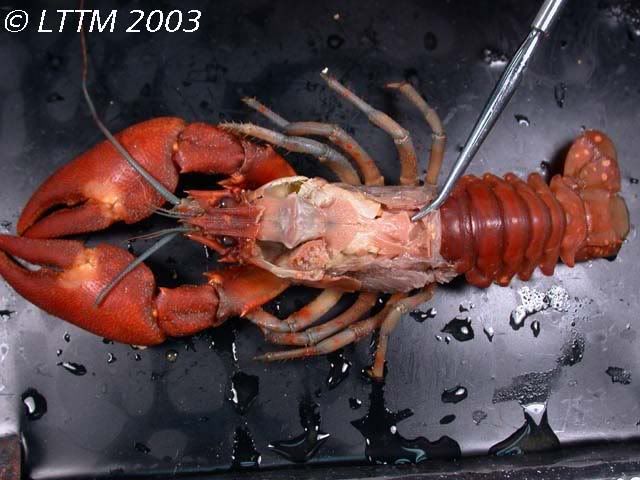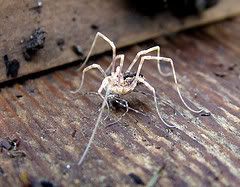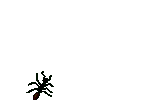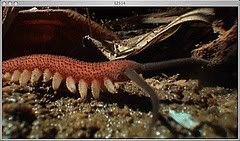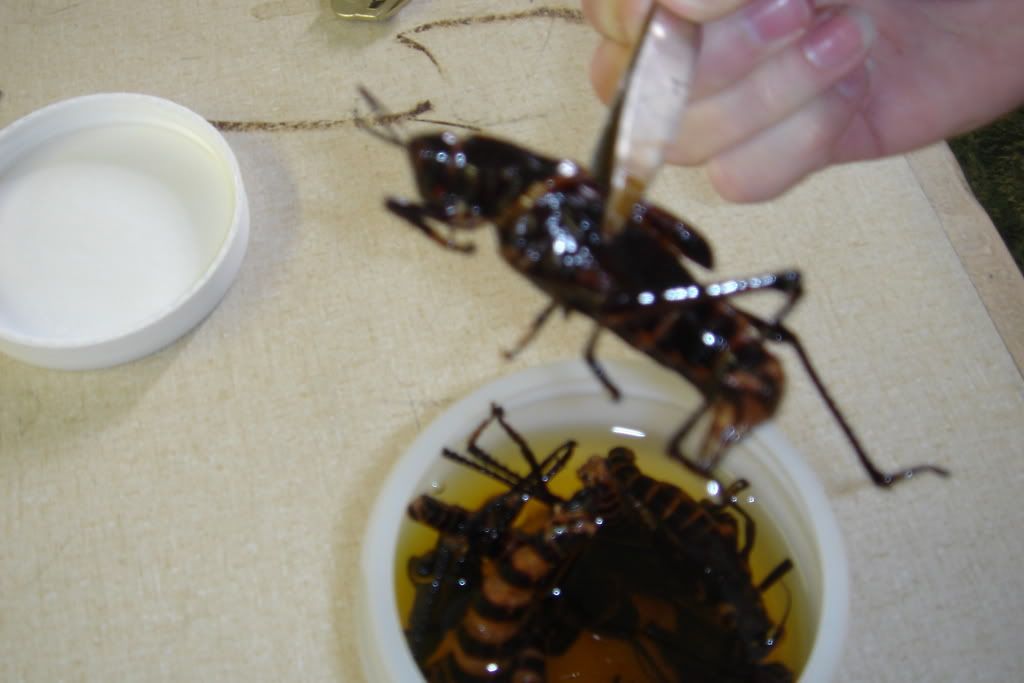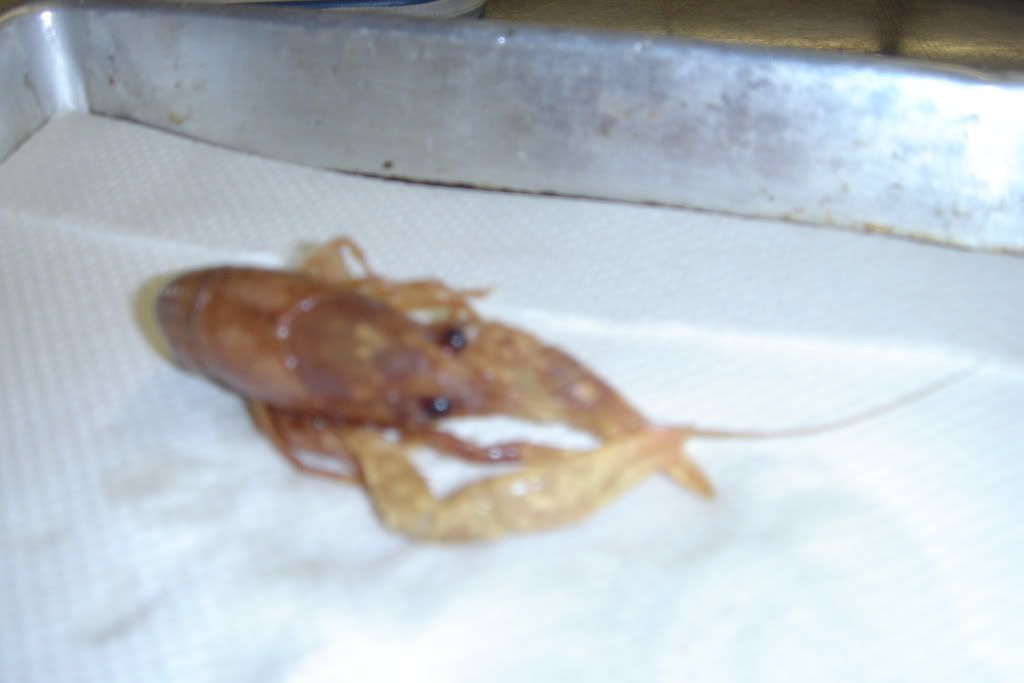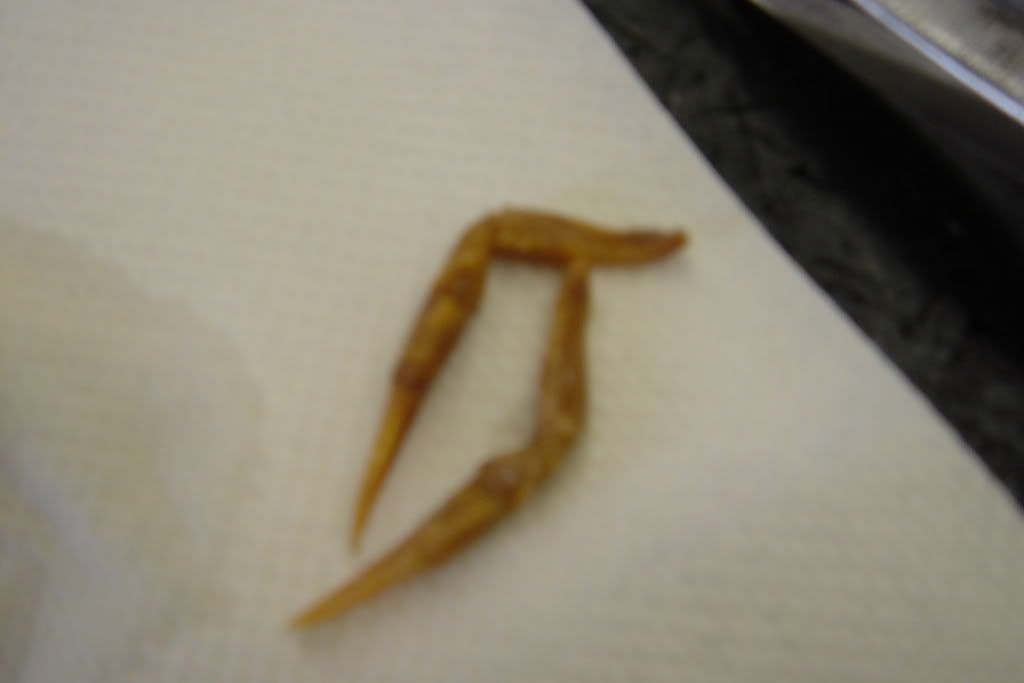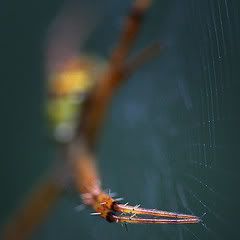 leg of a spider
leg of a spiderThe success of the arthropods has resulted from its body structure. There hard exoskeleton (made of chitin) is used for protection and prevent them from drying out. Though the down fall of the exoskeleton is that it won’t grow as the animal grows, therefore the arthropods will either molt or shed their exoskeleton. They have two to three main segments, a head, a thorax and an abdomen. Some have evolved into only having an abdomen and a cephalothorax. As body segments are lost so are appendages. All of the appendages in an arthropod have evolved into structures that benefit them in their environment; they include claws, antennae, wings, flippers, and etc. The appendages are used for feeding, defence, locomotion, and sensory reception.
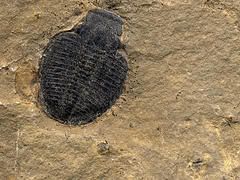 trilobite fossilTrilobita
trilobite fossilTrilobita-Have been extinct from earth about 250 million years ago
-The body of the first arthropods were believed to have similar structures.
-Have a thick tough exoskeleton with many segments, each segment was connected to a pair of appendages which was further divided to form to branches.
 lobsterCrustacea
lobsterCrustacea (ex. Lobster, Barnacles, Krill)
-Are characterized by: a hard exoskeleton, two pairs of antennae, and mandibles(mouthparts).
-Three body parts (head, thorax, and abdomen)
-Appendages development
-1st pair -used for sensing surroundings (antennae)
- contain sensory hairs
-movement (water fleas, push through water)
-feeding (filter feeding)
-3rd pair -mandibles (mouth parts)
-many use them as short heavy structures used for
biting/ grinding
-some use them for feeding (filter feeding,
locating food or sucking blood from a host)
 lady bugUniramia
lady bugUniramia (ex. butterfly, millipede, flea)
-largest subpyla
-has 1 pair of antennae and appendages
-inhabit almost all terrestrial habitats on earth
-some live in aquatic conditions
Centipedes
-carnivores
-pair of poisonous claws located on the head
-15-170 pairs of legs
-1 pair of appendages per segment except 1st segment and last 3 segments
Millipedes
-2 pairs of appndages per segment
-live in damp places
-feed on dead and decaying plant material
-roll into a ball for defence
-some also defend thereself by producing unpleasent/toxic chemicals
Insects
-3 main segments (head, abdomen, and thorax)
-3 pairs of legs attached to thorax
-1 pair of antennae (on head)
-1 pair of compound eyes (on head)
-2 pairs of wings (on thorax)
-breath with tracheal tubes
 spiderChelicerata
spiderChelicerata (ex. spider, scorpion, mite)
-don't have antennae (sensory "feelers"
-2 part body
-cephalothroax (anterior end, includes brain, eyes, mouth, mouthparts and esophagus, posterior end includes front part of digestive system and legs)
-abdomen (internal organs)
-2 pairs of appendages attached near mouth
-1st pair chelicerae
-2nd pair pedipalps







